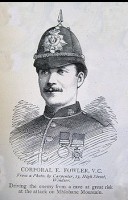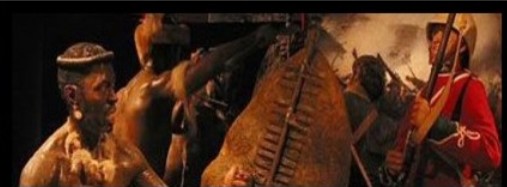| Latest topics | » The Pictorial World - March 15th 1879 Yesterday at 1:13 pm by ben2000 » The lost diary of Pvt James Owen Thu Jul 25, 2024 12:03 pm by miklew » Last of the 24th at Isandhlwana Wed Jul 24, 2024 6:16 pm by John Young » What was the uniform of field marshals/generals in the zulu war? Mon Jul 22, 2024 6:53 am by John Young » Henderson and the NNH at Rorke's Drift  Sat Jul 20, 2024 12:17 pm by SRB1965 » Capt. D. Hayes 1/3rd Regt., NNC Thu Jul 18, 2024 11:11 am by Julian Whybra » The Wrecked Camp Wed Jul 17, 2024 4:33 pm by Julian Whybra » Private N/N John Robert Branch 90th Regiment and his discovered diary Mon Jul 15, 2024 8:53 pm by 1879graves » Private John Scott 24th Regiment a fugitive at large Sun Jul 14, 2024 12:06 pm by 1879graves » 90th foot sgt T. Collins 214 Sun Jul 14, 2024 10:57 am by johnman » Baron Von Steitencron Wed Jul 10, 2024 3:10 pm by Julian Whybra » Sgt Joseph Windridge, Defender of Rorke's Drift - Memorial Tue Jul 09, 2024 3:15 am by 90th » Writing advice Sun Jul 07, 2024 4:04 pm by Julian Whybra » South Africa 1877-79, 1 clasp, 1877-8-9 (4389 Fr. Sergt. S. Smith. O/2. Bde. R.A.) Sun Jul 07, 2024 9:30 am by rai » The trashing of the Zulu monument to the brave warriors at Isandlawana March 12, 2024 has been blamed on scrap metal scavengers. Thu Jul 04, 2024 7:41 pm by ADMIN» The Goodwill Zulu Festival: Celebrating the Welsh and KwaZulu Natal Shared Heritage. Thu Jul 04, 2024 7:27 pm by ADMIN» Any nominal role of G Coy 2/24th regiment  Thu Jul 04, 2024 11:18 am by Wayne » Bassage Diary Thu Jul 04, 2024 9:31 am by Julian Whybra » Prior to Sihayo's Kraal  Thu Jul 04, 2024 9:19 am by 90th » British Fort Locations Thu Jul 04, 2024 3:40 am by 90th » Sergeant 1064 Tom Hick / Hicks G Company 2/24th Regiment Wed Jul 03, 2024 11:05 am by Julian Whybra » A Hungarian soldier in the Zulu War (?) Fri Jun 28, 2024 2:31 pm by Mr M. Cooper » Private 25B/279 Henry Sears Bugler E Company 24th Reg. KIA Isandlwana Thu Jun 27, 2024 1:07 pm by gardner1879 » Hamilton Browne's birthday Fri Jun 21, 2024 9:22 am by Julian Whybra » Zulu "Corps" Thu Jun 20, 2024 6:01 pm by Hobbes » Army Pay Department Personnel Thu Jun 20, 2024 11:49 am by Julian Whybra » Ntshingwayo birth date Sun Jun 16, 2024 11:37 am by Hobbes » Zibhebhu and Cetshwayo's family Wed Jun 05, 2024 9:11 pm by Julian Whybra » Smith's Store/Hotel Wed Jun 05, 2024 6:06 pm by Julian Whybra » Corporal James Frowen Williams F Company.  Tue Jun 04, 2024 5:20 pm by Julian Whybra » Shaka iLembe Sat Jun 01, 2024 1:27 pm by Jon84 » Bugler 1415 Thomas Finn / Flin 90th Regiment  Sat May 25, 2024 11:28 am by johnman » Inspector-General Evelyn Richard Hugh Pollard Tue May 14, 2024 10:13 am by ADMIN» Alfred Fairlie Henderson photographs. Sat May 11, 2024 8:01 am by Julian Whybra » Fairlie's Native Police Thu May 02, 2024 9:12 pm by Hobbes |
| July 2024 | | Mon | Tue | Wed | Thu | Fri | Sat | Sun |
|---|
| 1 | 2 | 3 | 4 | 5 | 6 | 7 | | 8 | 9 | 10 | 11 | 12 | 13 | 14 | | 15 | 16 | 17 | 18 | 19 | 20 | 21 | | 22 | 23 | 24 | 25 | 26 | 27 | 28 | | 29 | 30 | 31 | | | | |  Calendar Calendar |
|
| Top posting users this month | |
| New topics | » The Pictorial World - March 15th 1879 Yesterday at 1:13 pm by ben2000 » The lost diary of Pvt James Owen Thu Jul 25, 2024 12:03 pm by miklew » Last of the 24th at Isandhlwana Wed Jul 24, 2024 5:53 pm by miklew » What was the uniform of field marshals/generals in the zulu war? Sun Jul 21, 2024 12:30 pm by darthvaix » Henderson and the NNH at Rorke's Drift  Fri Jul 19, 2024 1:29 pm by SRB1965 » Capt. D. Hayes 1/3rd Regt., NNC Wed Jul 17, 2024 10:52 pm by Julian Whybra » The Wrecked Camp Sun Jul 14, 2024 8:51 am by 61MECH » The trashing of the Zulu monument to the brave warriors at Isandlawana March 12, 2024 has been blamed on scrap metal scavengers. Thu Jul 04, 2024 7:41 pm by ADMIN» The Goodwill Zulu Festival: Celebrating the Welsh and KwaZulu Natal Shared Heritage. Thu Jul 04, 2024 7:27 pm by ADMIN |
| Zero tolerance to harassment and bullying. | |
Due to recent events on this forum, we have now imposed a zero tolerance to harassment and bullying. All reports will be treated seriously, and will lead to a permanent ban of both membership and IP address.
Any member blatantly corresponding in a deliberate and provoking manner will be removed from the forum as quickly as possible after the event.
If any members are being harassed behind the scenes PM facility by any member/s here at 1879zuluwar.com please do not hesitate to forward the offending text.
We are all here to communicate and enjoy the various discussions and information on the Anglo Zulu War of 1879. Opinions will vary, you will agree and disagree with one another, we will have debates, and so it goes.
There is no excuse for harassment or bullying of anyone by another person on this site.
The above applies to the main frame areas of the forum.
The ring which is the last section on the forum, is available to those members who wish to partake in slagging matches. That section cannot be viewed by guests and only viewed by members that wish to do so. |
| Fair Use Notice | | Fair use notice.
This website may contain copyrighted material the use of which has not been specifically authorised by the copyright owner.
We are making such material and images are available in our efforts to advance the understanding of the “Anglo Zulu War of 1879. For educational & recreational purposes.
We believe this constitutes a 'fair use' of any such copyrighted material, as provided for in UK copyright law. The information is purely for educational and research purposes only. No profit is made from any part of this website.
If you hold the copyright on any material on the site, or material refers to you, and you would like it to be removed, please let us know and we will work with you to reach a resolution. |
| | | Lindsell Charles Frederick, |  |
| | | Author | Message |
|---|
littlehand

Posts : 7076
Join date : 2009-04-24
Age : 55
Location : Down South.
 |  Subject: Lindsell Charles Frederick, Subject: Lindsell Charles Frederick,  Wed Oct 13, 2010 9:36 pm Wed Oct 13, 2010 9:36 pm | |
| |
|   | | littlehand

Posts : 7076
Join date : 2009-04-24
Age : 55
Location : Down South.
 |  Subject: Re: Lindsell Charles Frederick, Subject: Re: Lindsell Charles Frederick,  Mon Feb 21, 2011 11:12 pm Mon Feb 21, 2011 11:12 pm | |
| LINDSELL, CHARLES FREDERICK. Colonel.Irregular Horse.Born Newcastle-on-Tyne, Northumberland. C1853.Son of Colonel Robert Henry Lindsell and Emma Elizabeth Lindsell.Husband of Frances Lindsell.
"Charles was educated at Tonbridge School where he was a pupil from 1865 to1868.Charles’s army career started when he joined the 14th Hussars in 1872,and later transferred to the 2nd Battalion, Royal Scots Fusiliers (late 21st Foot).He had served as the Adjutant of the 1st Volunteer Battalion, NorthumberlandFusiliers, during the Burmah Campaign of 1885, and during the campaign he wasemployed on “Special Service” duties, and had beenpresent at the surrender of Mandalay. He served in the South Africa Campaign, First Boer War of 1879-1881, during which time he had been present at the Siege of Potchefstroom 16th December 1880 - 21 March 1881. The first soldiers to arrive in Potchefstroom were those from Pretoria in the late afternoon of 18 November 1880, comprising one company of the 2nd Battalion, Royal Scots Fusiliers, plus 25 Mounted Infantry who were members of the same battalion, and a couple of 9 ponder guns of N/S Battery, Royal Artillery. This force was joined by another company of the Royal Scots Fusiliers from Rustenburg on 20 November 1881. In all a force of about 180 strong under the command of Major C. Thornhill. Major Thornhill's orders were to a build a fort, render aid to the civil power if necessary, and to 'show the flag'. At about 0900 on the first day of the siege, a small patrol of mounted armed Boers approached the Fort and Colonel R.W.C. Winsloe, C.B. of the Royal Scots Fusiliers sent the then Lieutenant Charles Lindsell, and the soldiers of the Mounted Infantry to find out what were their intentions. The Boer withdrew, but fired on Charles and his Mounted Infantry, which returned fire.
A Boer Commandant named Robbertse was hit in the arm during the exchange of fire, and is recorder as having been the first casualty of the war. Charles had also led the reconnaissanceon the cemetery, and was later Mentioned in Despatches. On 20 March 1881, Colonel R.W.C. Winsloe placed his offer before the Boer General Cronje and an agreement was reached. This agreement was signed on 21st March and the Siege of Potchefstroom came to an end. Two days later the war ended with the signing of peace terms at O'Neill's cottage, Laing's Nek Charles had also taken part in the Zulu War for which he received the medal and clasp. At the time of the 1891 census, then aged 38, Charles was the head of the house at “Thornehill,” Alnmouth Road, Alnwick, Northumberland, and was recorded by the census enumerator as being a Captain in the Royal Scots Fusiliers. Charles later served as an officer in the Egyptian Army. Whilst serving as a Captain in the Royal Scots Fusiliers, Charles had been in charge of the Scouts during the ‘Jameson Raid’ in the Transvaal,South Africa, which was carried out between 29 December 1895 and 2 January 1896. To this day, the events surrounding Leander Starr Jameson's involvement in the Jameson Raid, being somewhat out of character with his prior history, the rest of his life, and successful later political career, remains something of an enigma to historians." |
|   | | | | Lindsell Charles Frederick, |  |
|
Similar topics |  |
|
| | Permissions in this forum: | You cannot reply to topics in this forum
| |
| |
| |
